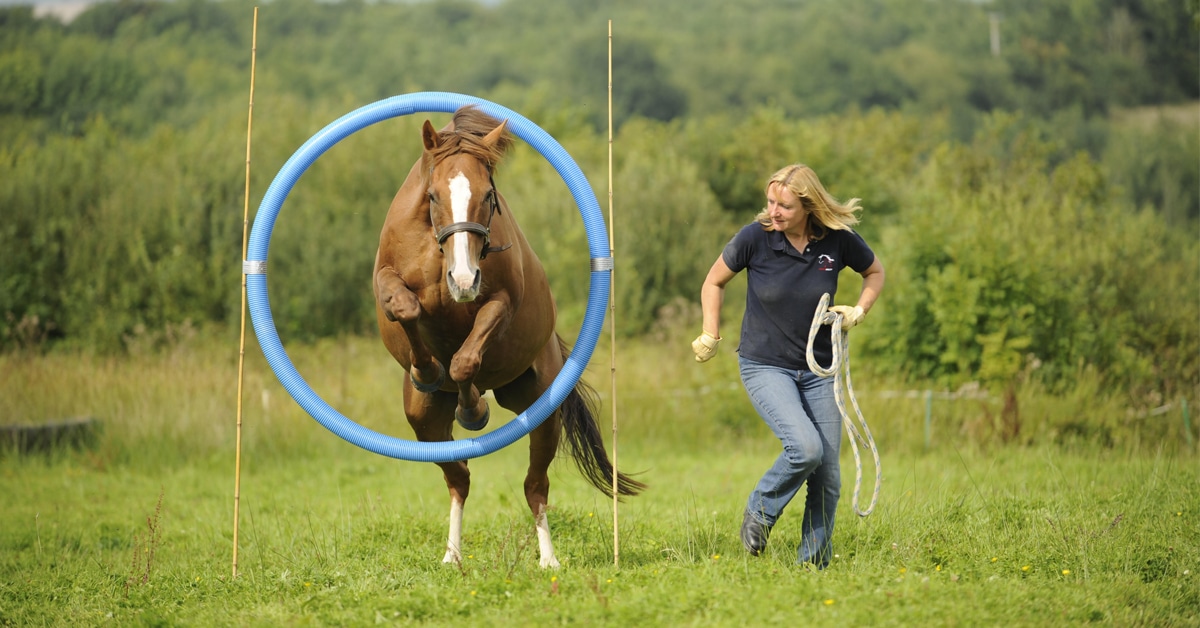Many of us have cheered the peppy pups that perform as part of the SuperDogs™ troupe at the Royal Agricultural Winter Fair in Toronto or elsewhere around the country. Dog agility is a great way for owners of high-energy dogs to train and exercise their hyperactive animals. But what about horse agility? It’s a sport that’s gaining popularity around the world and was started in the United Kingdom, where the International Horse Agility Club (IHAC) was launched in 2009 by horsewoman Vanessa Bee.
Bee got the idea from watching dogs compete in agility classes and wondered if the same principles could be applied to horses. In the canine version, the dogs are free from restraint to move freely over obstacles. Bee decided to give it a go and the club was born.
“Initially we wanted it to be just like dog agility with the horses working freely with no lead ropes, but that proved too much for our beginners,” Bee explains. Instead, the club developed a six-level system from Starter to Advanced Two Star for on lead line, and four levels of at liberty, with both categories given the option to complete special courses at the walk only for any horses and/or handlers who cannot run.

